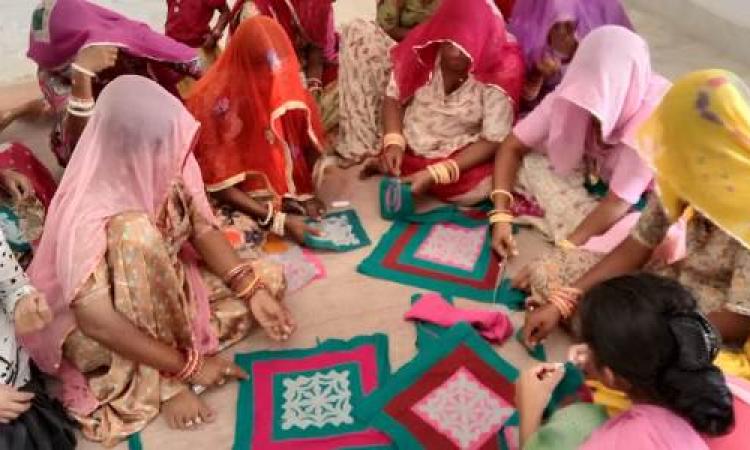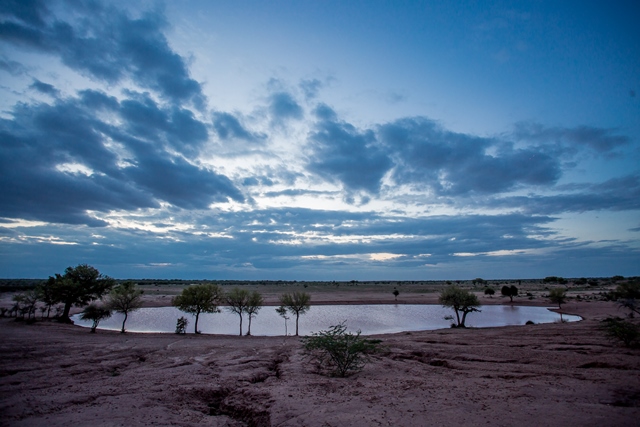
The parched land of great Indian Thar desert stands out invariably for its hue and colours. And the communities from one of the harshest regions in the country continue to show their remarkable pliability to calibrate with the demographic difficulties and still bring out the most from the available resources!
The desert regions from the western part of India- Rajasthan and Gujarat are exemplary examples of the unique water conservation techniques practised by the communities in the region. Not only that, but the arts and crafts practised by the communities in the region also demonstrate their resilience and optimism, and are well known for their elegance, color and intricate designs.
The communities here - be it Rabaris, Raikas or Meghwals, essentially follow agro-pastoral lifestyle wherein they utilise the most out of nature, which remains barely conducive for the most of the year. These communities have not only evolved as resilient agriculturists, but also continue to toil hard to revive the unique arts and crafts of the region that face the threat of decline.
The great Indian Thar covers about 2million sq.kmts of area, most of which lies within the state of Rajasthan and some within Gujarat. No boundaries existed in the region before independence, which led to the amalgamation of techniques on water conservation, agriculture and other modes of livelihood from both the areas.

Art helps community cope with drought
Kastura Ram (55), a Meghwal artisan who belongs to a small village near the town of Barmer informs, “When I was a kid, we came to this side, we lived in Sindh, which went to that side”. Like Kastura Ram, several other artisans, camel rearers had to cross borders as per their preferences, religious choices and societal pressures. However, what still remain dissolved in the culture and values are the indigenous techniques of making their life livable in the desert.
Kastura Ram adds, “Back then when families migrated to India, we had to settle in refugee camps, with no land and no other option to feed our families. We just had art”.
Sindh Province, along with Rajasthan and Gujarat also evolved with resilient techniques of water harvesting. Meghwal artisans like Kastura Ram recollects, “During childhood, I have seen our entire village come together and make different pieces of art and crafts or new clothes in the summer months mostly because of lack of water, which pushed us to explore other livelihood options. The drought situation was very frequent then, and so is it now! Agriculture is difficult to take up, so most of the families have moved to crafts”.
Paru Bai (62) another artisan, who crossed the borders and came to India from Bhawalpur in Pakistan says, “When we were shifted to different villages by government officials, we had no water in most of the villages and neither could we pursue agriculture. Soon, city-based middlemen approached through some of the officials and we were asked to try Kashidakari. At that time, we could feed our children with whatever money we made through this”.
Meghwals constitute the lowest strata in Rajasthan’s caste system and they had to bear the brunt of untouchability. The villages which had water structures still had constraints for this community using the water sources back then. Paru Bai recalls, “Before 1985, we had a separate water facility that was just used for drinking or for basic needs, but not for agriculture. This water deficit somehow has polished our art”.

Sindhi, Soof, Applique, Kharekh - embroideries which blessed the region by adding more color and vibrancy hide a story of immense resilience and hardship to fight against all odds, which rose because of lack of water to pursue agricultural work.
Though there might not be a causal relationship that can be drawn between the water and the crafts of the region, testimonies of the refugee artisans prove that the roots of Kashidakari art can be traced to the need identified by the community to explore livelihood options when there was shortage of essential and crucial resources such as water and food - that which they continue to deal with, with immense hardwork, grace and dignity!
Rituja Mitra is a research consultant at Urmul Trust.